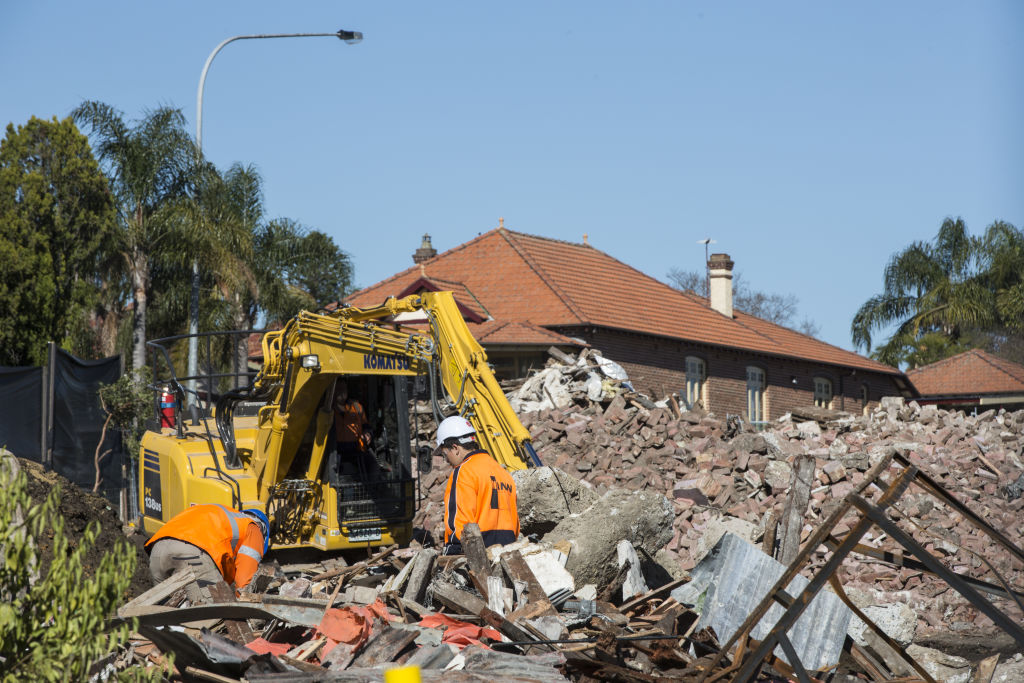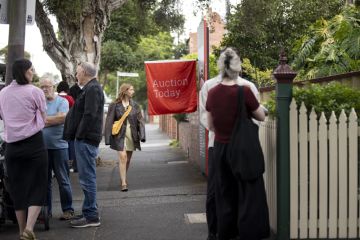Compulsory land acquisition in Victoria: How it works and how to get fair compensation for your home

When eager developers attempt the compulsory acquisition of the Kerrigan house to expand the neighbouring airport in the 1997 Australian film The Castle, head of the house Darryl Kerrigan has no intention of going quietly.
The Aussie battler is determined to protect his family’s “castle” in the face of bullying authorities and eventually claims victory in the High Court. Unfortunately, this kind of happy ending is elusive in the real world.
While some compulsory acquisition cases do end up in the tribunal or court, the overwhelming majority are able to be negotiated without the need for this step.
“Most cases get negotiated before the need to go to the tribunal or court,” says Anton Dunhill, head of the property disputes and compulsory acquisitions team and principal at Hunt & Hunt Lawyers in Victoria.
“Of our many hundreds of cases only a few need to go through that process as the legislation allows for the parties to get independent advice and to negotiate the best possible outcome.”
How can I check if the home I’m interested in buying is listed for possible acquisition?
According to Victoria’s Department of Environment, Land, Water and Planning (DELWP), land must be reserved under a planning scheme before any compulsory acquisition process can take place. This involves applying a Public Acquisition Overlay (PAO) to the land.
Dan Minogue, a partner at Rennick & Gaynor Solicitors, a company specialising in compulsory acquisition, says the PAO will document which authority is involved and what the intended public purpose is. Once reserved, a notice of intention to acquire is served on each person with an interest in the property (owner, tenant, mortgagee) and must also be lodged with the Registrar of Titles.
So home buyers can start by checking the contract of sale for a PAO.
If there’s nothing in the planning scheme, Minogue says your second port of call is the local council which should be aware of any projects that could impact your property.
“The third thing to do is talk to the locals in the area in which you’re buying,” he says. “It’s likely they’ll know what’s going on.”
However Minogue warns home buyers and home owners that even if they’ve conducted extensive research, there’s still a risk a property will suddenly find itself on a “wanted” list.
“A future public purpose could influence a planning permit outcome with there being no prior notice of the authority’s intention,” he says.
Minogue says his firm acted for an owner who wanted to put factoryettes on his land and sought a planning permit.
“All of a sudden VicRoads said ‘we need your land for a public purpose’. The owner was then in a position to set up a claim for compensation.”
What are my options if I find out my home is going to be acquired?
It doesn’t matter if you’ve just put the final lick of paint on a $200,000 renovation or you’re living in a tent, nor does it matter if you’re a 95-year-old widow or a family of 10.
“If the government authority wishes to acquire your house, they will acquire it,” says Minogue. “We’ve had a number of experiences where there has been a flaw of process, but it just means the process will start again, so the only thing you’re buying is time.”
In Victoria, an authority formally acquires land by publishing a notice in the Government Gazette and it must make an offer of compensation within 14 days of publication. The acquiring authority then needs to wait a minimum of two months before they can exercise their powers of compulsory acquisition.
So the most important step for land owners is to immediately get legal advice on how to optimise their compensation from the acquisition.
Legal costs that are “reasonably incurred” are paid for by the government, so home owners don’t stand to lose by engaging an expert.
“They’re going to give you an idea of what your rights are, where you stand and they’ll engage a specialist valuer and get advice as to whether the offer being made is a good offer or needs to be challenged,” says Minogue.
The authority can’t take possession of land used as a principal place of residence or business until three months after the date of acquisition, and you’re entitled to live in the property rent-free for that time.
How is the value of my home calculated?
1. Market value – The biggest component of the purchase offer is the market value of the land, which should equate to the price that would be paid for your home on the open market.
2. Severance – Added to this are losses due to severance, when the government purchases a portion of your land which subsequently devalues the remaining land, a situation more common in rural locations. A common example, says Minogue, is when a freeway needs to be duplicated and VicRoads conducts partial acquisitions of rural holdings.
3. Relocation costs – The government will generally pay your relocation costs which might include legal fees, valuation fees and mortgage discharge fees.
4. Stamp duty – The government will also pay the stamp duty on a new home, provided that home is of a similar value to the one you are selling. This is the case whether it’s a principal place of residence or investment. It’s also worth noting the Australian Tax Office does not expect land owners to pay capital gains tax on the sale of an investment property, recognising that land acquired by compulsory process cannot be regarded as an ordinary transaction.
5. Solatium – The final component of the purchase offer is an amount for “intangibles”, known as solatium. This fee takes into account the length of time you have occupied the home or land, your age and circumstances, and the inconvenience of being removed from your home. In Victoria solatium is a maximum of 10 per cent of the market value of the property up to a cap of $100,000.
“The difficulty with a lot of these claims is the influence that the project has had on land values in the area,” says Minogue.
Minogue gives the example of the Dandenong Valley linear park where compensation offered for compulsorily acquired land was deemed insufficient.
“We argued that our clients’ land, although zoned rural living, would have been an industrial estate [in the future] and would have been fully built in, so compensation went from a little to a lot as a result of the suppression that the future linear park placed on the development of that land and its market value.”
Am I entitled to compensation if I sell my home on the open market after a PAO has been applied?
Planning compensation, also known as “loss on sale” compensation is payable when a property’s value is diminished by the Public Acquisition Overlay.
“Compensation in this case is calculated on a before and after basis,” says Minogue. “So a valuer will look at what your property was worth without the PAO and the difference between that value [and what you can sell for] is the amount of compensation you’re entitled to.”
The DELWP states that the acquiring authority may also be liable for legal, valuation and other costs arising from establishing a compensation claim.
But the most common form of compensation is where land is designated for future acquisition well in advance of it actually being acquired, and land owners are then unable to use or develop the land fully during the intervening period because of the “blight” which the PAO places over the land.
Minogue says it’s worth getting legal advice before you attempt to obtain a planning permit to explore your rights and see what, if any, compensation you may be entitled to.
What if I don’t agree with the valuation?
Land owners who don’t agree with their offer of compensation can make a counter offer in the form of a notice of claim sent directly to the acquiring authority within three months of the initial offer.
It helps to include evidence to support the higher amount you are seeking.
If agreement still isn’t reached, the matter becomes a disputed claim and will be heard by either VCAT (Victorian Civil and Administrative Tribunal) for claims where the amount in dispute is $400,000 or less, or in some cases the Supreme Court for amounts over $400,000.
With an extraordinary number of infrastructure projects underway and in the pipeline, including the North East Link, the Melbourne Metro Rail Project, Western Highway duplication, the Bulla Bypass and Koo Wee Rup Bypass, Victorian residents can expect land acquisitions to remain a fixture in both urban and rural areas.
Dunhill says the legislation on acquisitions is a complex field and very confronting for home owners, landlords, tenants and businesses.
“The most relevant legislation has hardly been changed since 1986 and is in need of review,” he says. “When acting for claimants we try to maximise the compensation allowable under the law. The government is usually open to sensible negotiation but it’s not able to exceed the limits of the law. As a result, sometimes the outcomes are not fair and may have to be tested at the tribunal or court.”
For more information, see the Department of Environment, Land, Water and Planning’s Acquisition and Compensation guide.
We recommend
We thought you might like
States
Capital Cities
Capital Cities - Rentals
Popular Areas
Allhomes
More





